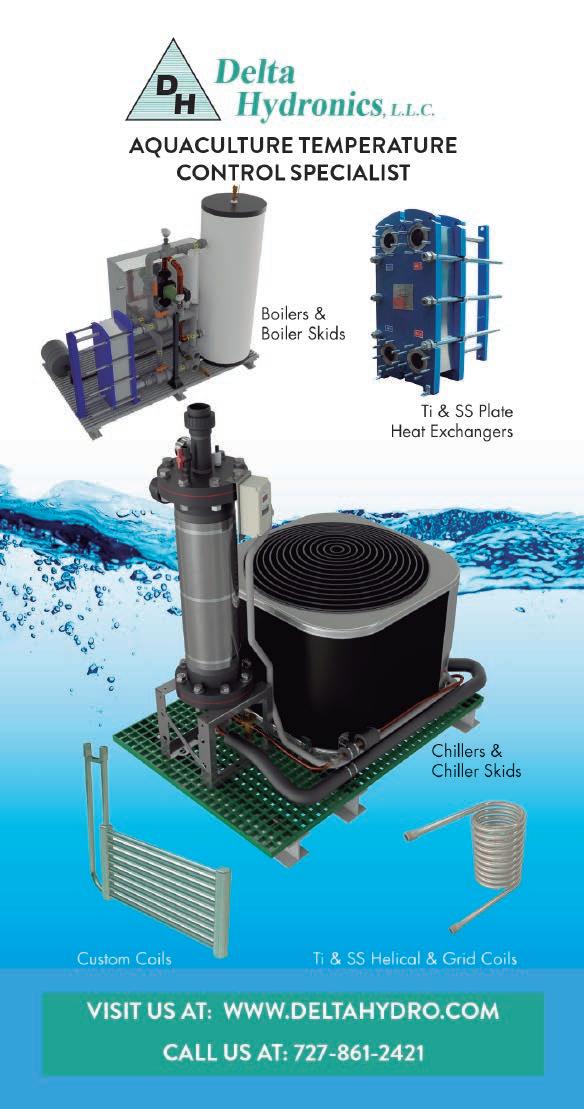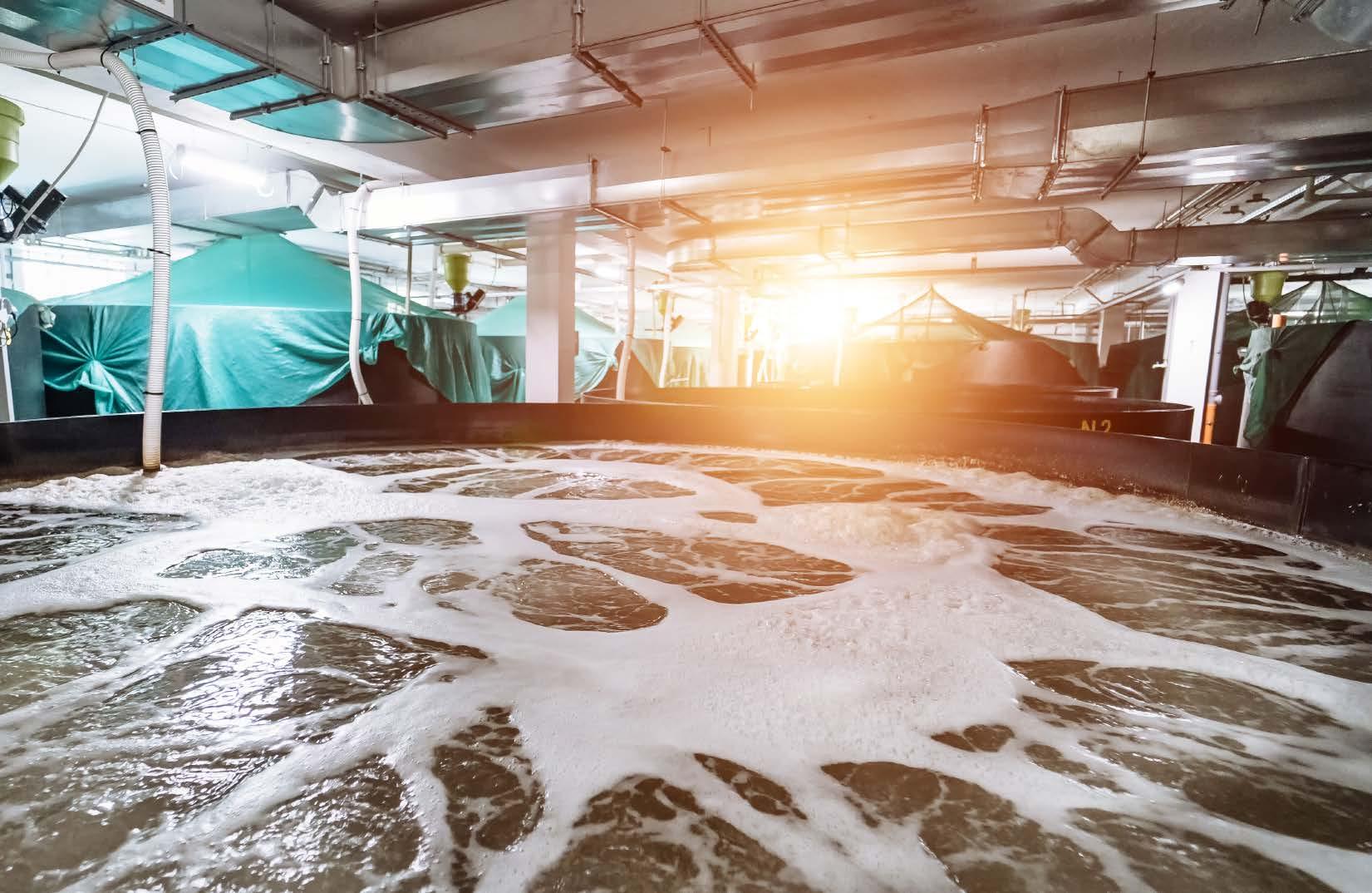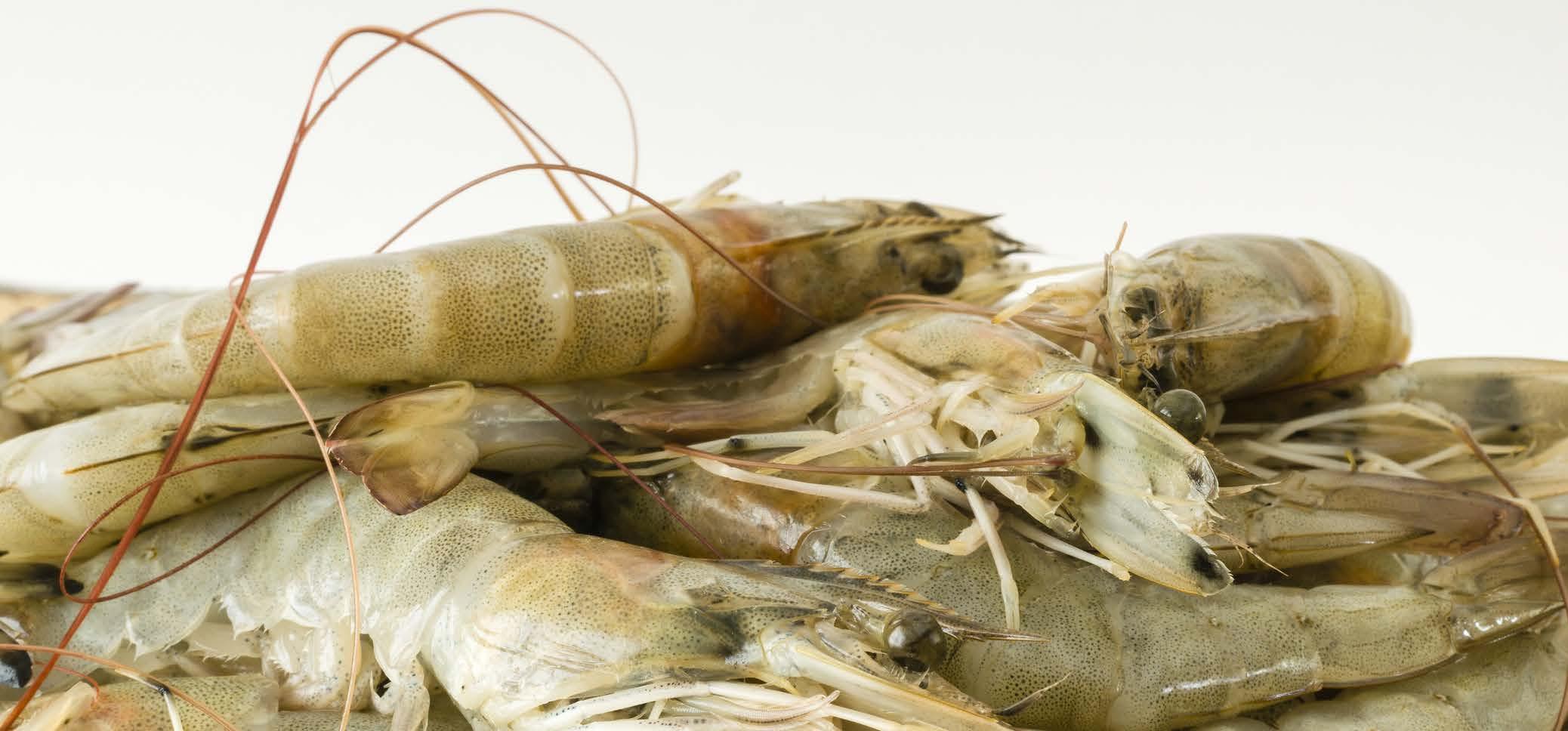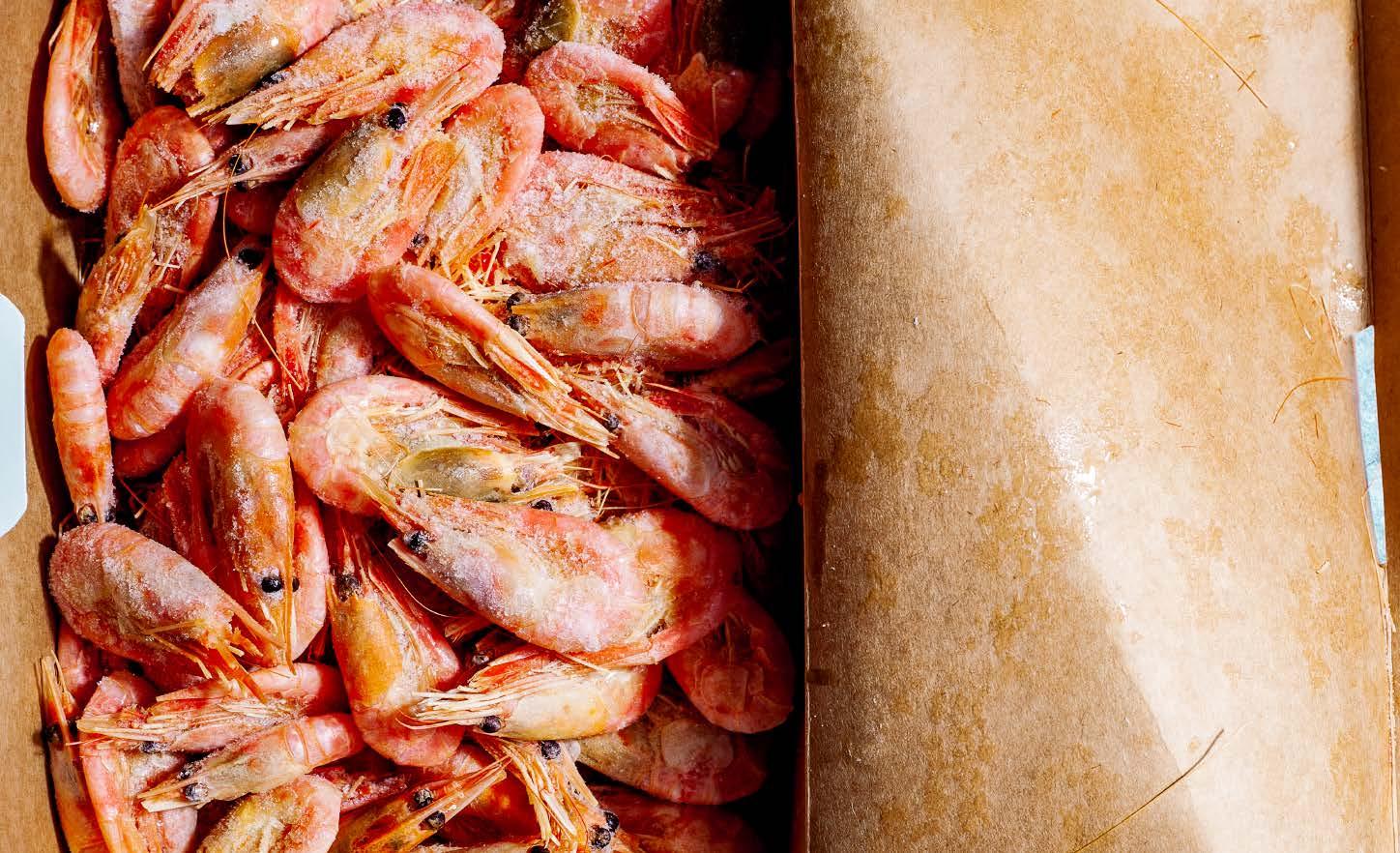
10 minute read
Effect of supplementing heterotrophic and photoautotrophic biofloc.
On the production response, physiological condition, and post-harvest quality of the whiteleg shrimp, Litopenaeus vannamei.
By: Marcel Martínez-Porchas, Marina Ezquerra-Brauer, Fernando Mendoza-Cano, Jesús Enrique Chan Higuera, Francisco Vargas-Albores, Luis R. Martínez-Córdova *
Diverse investigations on biofloc have placed this technology as a promising strategy towards sustainability. The presence of microbial communities do not only have a positive effect on the production response of shrimp, but an antagonist effect on potential pathogens, and also plays a role as immunomodulatory agent for shrimp.
Most of these works are related to the productive, zoo-technical, and reproductive responses of the organisms farmed in many types of biofloc technology systems (BFT). However, the effects of aquafeeds on the physiology and post-harvest quality of farmed organisms has not been addressed enough, being an important issue because of their implications on production and marketing.
There are reasons to support the hypothesis that the consumption of these kinds of alternative feeds may affect some biological conditions such as changes in the immune and antioxidant responses of shrimp after using microbial biomass as direct food source (bioflocs, biofilms, peryphyton).
The physiological condition is an important aspect to consider for the culture of any species because it may be ultimately associated to overall production and economic profitability; while the post-harvest quality of shrimp is associated to the protein denaturation, and consequently, the storage shelf life, aspect, price, and consumer preference of the product. It has been addressed that the postharvest quality of aquaculture products is significantly influenced by the consumption of natural feed such as insects and others.
The biological and biochemical composition of bioflocs which are mainly constituted by organic matter and aerobic microbes, may vary depending on diverse factors such as source of water, microbial inoculum, carbon/nitrogen ratio, substrate, temperature, salinity, light intensity, DO concentration, turbulence of the water column among some other.
The possibility of forming photoautotrophic, heterotrophic or mixotrophic bioflocs depends on the initial inoculum. Biofloc and biofilm mass based on photoautotrophic microorganisms (also known as peryphyton when attached to submerged surfaces), have typically low protein contents but they have a high content of lipids and carbohydrates.
Contrarily, high protein and low lipid concentrations are commonly constituting bioflocs or biofilms based on heterotrophic microorganisms.

Materials and Methods
The study was conducted over 10 weeks in the facilities of DICTUS, the University of Sonora, Mexico. A greenhouse (6 m x 3 m) was used to install nine experimental units consisting of plastic tanks with an operative volume of 50 L, as well as two bioreactors to produce the bioflocs.
The bioreactors consisted of plastic tanks (500 L of capacity and operated at 450 L). These were supplied with filtered marine water and constant aeration to achieve dissolved oxygen (DO) levels over 4.5 mg/L, while maintaining the water column with an adequate turbulence to avoid the biofloc sinking.
To produce heterotrophic biofloc, molasses was supplied each week to reach a C:N ratio of 10-12. The tank was covered to avoid light penetration. To produce photoautotrophic bioflocs, the water was fertilized with Triple17R (an agricultural fertilizer with 17 % N; 17 % P and 17 % K) to have a C:N ratio of 2-3. The tank was covered with transparent plastic allowing the penetration of light during the day. The bioreactor for producing the heterotrophic biofloc was inoculated with 5 mg/L of an unspecific bacterial marine consortium (lyophilized), whereas the bioreactor to produce photoautotrophic bioflocs was inoculated with 500 mL/m3 of the benthic microalgae Navicula incerta at a concentration of 1 × 106 cel/ml. Both bioreactors were provided with 1.5 g/L amaranth seeds as a floating substrate in order to have a nuclei to accelerate the biofloc formation. After 15 days, the biofloc from each reactor was ready to be collected with a plastic net mesh of 300 μm in order to have a size capable to be efficiently captured by the shrimp. The remaining volume was maintained as inoculum.
A single factor of three replicates per treatment was performed. The treatment evaluating the heterotrophic biofloc was named TH; the treatment evaluating the photoautotrophic biofloc was named TP, and the control without biofloc was identified as TC. Experimental units consisting of plastic containers (50 L) were provided with constant aeration and covered with plastic mesh to avoid shrimp escape; these were stocked with 12 (300 org/m3) juvenile L. vannamei (1.5 g).

The proximate composition of the commercial feed and both biofloc types was determined by following the AOAC (2019) methods. Biofloc samples were taken at the beginning, at the middle, and at the end of the trial.
Environmental variables were monitored twice a day. The concentration of total ammonia (TAN) was determined each week.
High protein and low lipid concentrations are commonly constituting bioflocs or biofilms based on heterotrophic microorganisms.
At the end of the trial, a half (8–9) of the survivor shrimp from each unit were considered for analyzing hemolymph parameters and the other half for assessing the post-harvest quality.
Results
Proximate composition of bioflocs revealed that the heterotrophic biofloc (TH) contained a higher proportion of protein (46.7 %) than the photoautotrophic (TP: 19.9 %) and the control diet (35.0 %), whereas lipids registered values of 7.8, 4.9 and 0.8 % for control, TH and TP, respectively. Carbohydrates registered 39.6, 38.6 and 17.6 %, respectively.
The water environmental variables ranged most of the time into the levels acceptable for shrimp culture, and no significant differences were observed among groups, except for TAN (Control 3.40; TH2.80 and TP1.90 mg/L).
Significant differences were observed among treatments regarding some parameters of shrimp productive response.
The weight gain registered no-significant differences between shrimp groups (a mean of 0.5 g/week), but mean survival varied from 77 to 86 %, with the lowest record in TH. The FCR was significantly lower in TP (1.7) compared to TH and the control (≥2.1).
Regarding the hemolymph parameters, the levels of glucose, lactate, protein, and acylglycerides were similar among treatments, and only cholesterol resulted to be significantly higher in the control, while the lowest levels were found in TP.
Discussion
Except for TAN, all the water quality parameters ranged into the values considered as suitable for shrimp culture. Total ammonia nitrogen recorded in the control units was high but no massive mortalities were recorded in the control units was high but no massive mortalities were recorded.
The lower values of TAN recorded in TP, when compared to the control, could be attributed to the effect of the photo-autotrophic microorganisms associated to the bioflocs.
Also in TH, the TAN concentration was lower than in the control; in that case, the decrease was probably due to the nitrifying microorganisms originally present in the inoculum or associated with the bioflocs during the trial, which transform ammonium nitrogen into nitrites and nitrates; but also to the direct degradation of organic matter by the heterotrophic bacteria.
The productive parameters in the treatments and control ranged into the values considered suitable for intensive shrimp culture.
The survival of 86.1 % recorded in TP and the control is inclusively higher than most of the reported for intensive farming of white shrimp, while the growth rate of around 0.5 g/week, is on the average range for this type of culture.
The best response of TP, particularly the low FCR is attributed to the nutritional contribution of microalgae and other microorganisms associated with photoautotrophic bioflocs, which complemented the formulated feed supplied.
Contrarily, despite the heterotrophic biofloc registered a protein content exceeding by more than 2-fold times the photoautotrophic biofloc, the production response was lower in TH, probably because of the quality of protein, but also due to the heterotrophic biofloc resulted to be deficient in lipids, compared to the photoautotrophic.

The physiological condition of shrimp after the trial (as indicated by the hemolymph parameters), showed no differences between experimental groups except for cholesterol, suggesting that the use of biofloc as complementary food may not alter the physiological status of shrimp.
Regarding cholesterol, the concentration observed in the control was significantly greater than the recorded in TP (almost the quadruple). This is a remarkable finding that needs to be further investigated and confirm if this decrease also reflected in muscle, because of the possibility of farming shrimp with low cholesterol levels considering that several people do not consume shrimp due to its high cholesterol content.
Regarding post-harvest quality (as indicated by the sensory analysis), no significant differences were found among the treatments and the control. These results could be positive for the cause of BFT, since the type of food consumed by shrimp, particularly bacteria and algae, can negatively influence its post-harvest quality and organoleptic characteristics.
For example, some decades ago, pond-cultured penaeid shrimp imported into the United States from Ecuador were reported to have undesirable organoleptic characteristics including an intense earthy-musty flavor which made them unmarketable.
Later it was concluded that the consumption of geosmin-producing blue-green algae was responsible of these unmarketable characteristics.
However, additional experiments considering protein and lipid quality of bioflocs, as well as nutrient utilization and shelf life of shrimp could provide additional information to these findings.
Table 3. Post harvest variables of cooked shrimp from the treatments and the control done by expert panelists.


This is a shortened version developed by Ph.D. Carlos Rangel Dávalos, researcher and professor at the University of Baja California Sur México. The original article on which is based is titled “Effect of supplementing heterotrophic and photoautotrophic biofloc, on the production response, physiological condition and post-harvest quality of the whiteleg shrimp, Litopenaeus vannamei”, by: Marcel Martínez-Porchas, Marina Ezquerra-Brauer, Fernando Mendoza-Cano, Jesús Enrique Chan Higuera, Francisco Vargas-Albores, Luis R. Martínez-Córdova. The article was originally published on December 2019, through the Aquaculture Reports Journal from Elsevier, under a Creative Commons license, and its full version can be accessed through this link:https://doi. org/10.1016/j.aqrep.2019.100257









